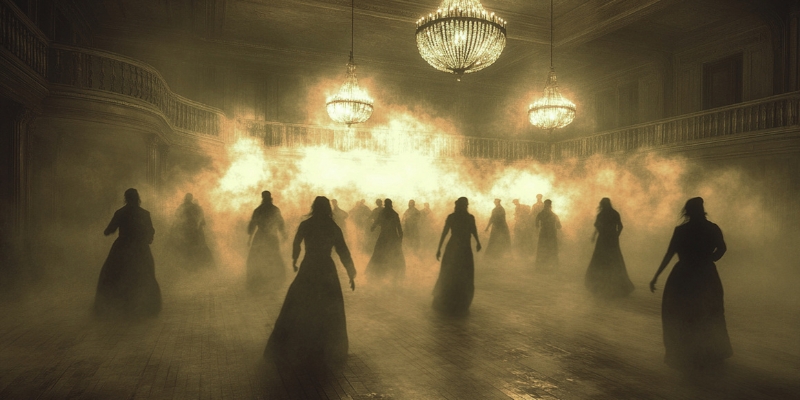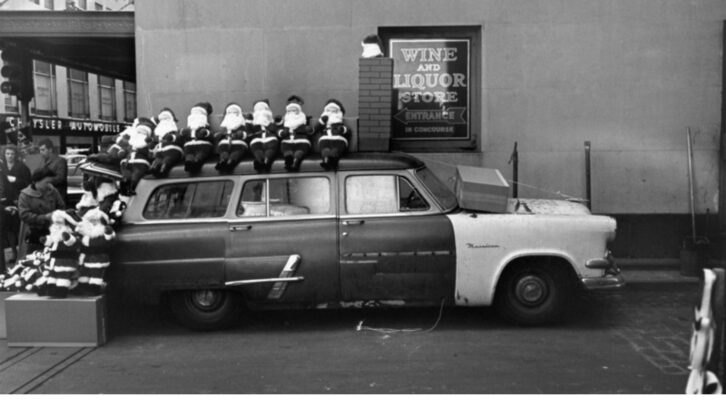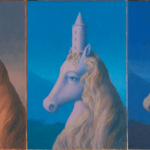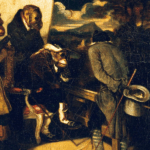Do you believe in ghosts?
I came face-to-face with this question when I spent a week immersed in finishing The Mad Wife during a writing residency. The mansion where I stayed at Weymouth Center for the Arts and Humanities in Southern Pines, NC, seemed alive. The floors murmured. Sounds drifted from nowhere.
One night, as I sat in bed watching a movie, my closet door swung open. I got up, latched it, propped something in front of it. And then I tried not to think about it.
Writers are trained observers. We explain what can’t be explained. I told myself it was old hinges, humidity, the weight of my own imagination. But in the dark, when the house seemed most alive, I began to wonder what I really believed.
I was writing the story of a 1950s housewife, Lulu Mayfield, whose life unravels after the birth of her second child and the diagnosis of hysteria. Lulu’s story may be one of fiction, but the act of writing it made her quite real to me because in truth she is an amalgamation of too many women’s stories, including Isabel, a woman who used to inhabit the room where I slept. And perhaps still does.
No one at Weymouth could tell me Isabel’s full story. What I gathered was that she’d lived there in the 1940s, was well educated, and perhaps had her own brush with hysteria before she took her life inside the room next to mine.
I can’t say I believed in ghosts when I arrived at Weymouth. But I can say that Isabel’s story wouldn’t let me go.
*
The Ghost of the Everywoman
When I began writing The Mad Wife, I didn’t set out to write a ghost story. I was writing about a woman who is dismissed, a victim of a time that preferred its women quiet and its diagnoses easy. Lulu lives out the ghost story of thousands of women.
Until 1980, hysteria was a psychological diagnosis, but at first, it was classified as a physical condition. The ancient Egyptians and Greeks referred to it as the “wandering womb” where they believed that if a woman was “out of sorts” it was because her uterus was migrating within her body and the cure was to coax it back into right position.
In truth, the catch-all diagnosis was often dismissive of women and meant conditions such as depression, anxiety, post-partum depression and psychosis, lupus, rheumatoid arthritis, multiple-sclerosis, and more went undiagnosed.
During Lulu’s era, some who were labeled hysterical were prescribed tranquilizers. Some were hospitalized. Others were subjected to electroconvulsive therapy or even lobotomy.
It’s estimated that between 40,000 and 50,000 lobotomies were performed in the U.S., most on women. Justification for the procedure included emotional tension, depression, obsessive compulsions, anxiety, psychosis, and psychosomatic disorders. If haunting is what happens when a life ends unjustly, then the twentieth century is filled with ghosts.
Lulu became my way of listening to the housewives, mothers, daughters, and patients whose bodies became battlegrounds for misunderstanding. The diagnosis of hysteria may be gone from our medical manuals, but the impulse to doubt women’s pain is not.
That is the horror at the heart of The Mad Wife, not a flickering apparition, but a steady silencing.
*
The Ghosts of Female Storytellers
All stories are shaped by the histories we inherit, the truths we carry, the mysteries we may never fully understand, and the stories that came before us.
Charlotte Perkins Gilman’s “The Yellow Wallpaper” was one of my earliest hauntings. That creeping, trapped, and dismissed voice taught me how madness can become a metaphor for confinement. Then came Sylvia Plath, whose book The Bell Jar I dissected line by line and whose journals helped me understand her personal battles as well. Both Gilman and Plath had been dismissed in their eras, treated as fragile or unstable.
And then there was Billie Eilish. Her song “What Was I Made For?” looped endlessly as I wrote, its melancholy ache became an anthem for Lulu, for me, for this book.
Each of these women became a ghost at my desk, voices from different eras asking the same question: Who gets to define what is real?
*
The Ghost in My Room
By the third night at Weymouth, I’d heard the rumors about apparitions, moving rugs, footsteps on the balcony outside my room, music playing at all hours, doors opening and closing on their own, beds that shift in the night.
I found myself questioning what I really believed while also feeling more inspired than ever. Maybe it was adrenaline. Maybe Isabel was nearby, nudging me to keep going. Maybe she wanted her story told.
When I thought about this educated woman and mother who was thought to be mad, it was hard not to see the throughline from ancient Greece to the 1950s to now. The vocabulary changes. The dismissal doesn’t.
Every era has its way of quieting women who speak too loudly. Sometimes that silencing looks like medicine. Sometimes it looks like burning stakes. Sometimes it’s just disbelief settling into a woman’s bones when no one listens. Maybe ghosts aren’t the dead who refuse to leave, but the stories we refuse to hear.
*
The Ghosts that Make Us Write
I don’t know if Isabel was there at Weymouth. I don’t know if the door moved because of old hinges or a presence. But I do know that something happened in that house that clarified the work I had to do.
Whether real or imagined, in some ways, it felt as though Isabel had called me there to whisper her story and inspire Lulu’s. Isabel reminded me of the importance of telling this story. Of giving voice to the voiceless. Of writing for the ghosts who can no longer speak for themselves.
We write to make the invisible visible. To give language to the silenced. To acknowledge the lives that were overlooked, misdiagnosed, or dismissed. And when we do, we bring them back, not as phantoms, but as voices reclaiming their truth.
So yes, I suppose I do believe in ghosts, the kind that linger not to frighten us, but to remind us why we write, why we read, why we keep searching for meaning in the shadows. They ask us not to turn away from the dark, but to listen and to tell the stories that will not rest.
***


















